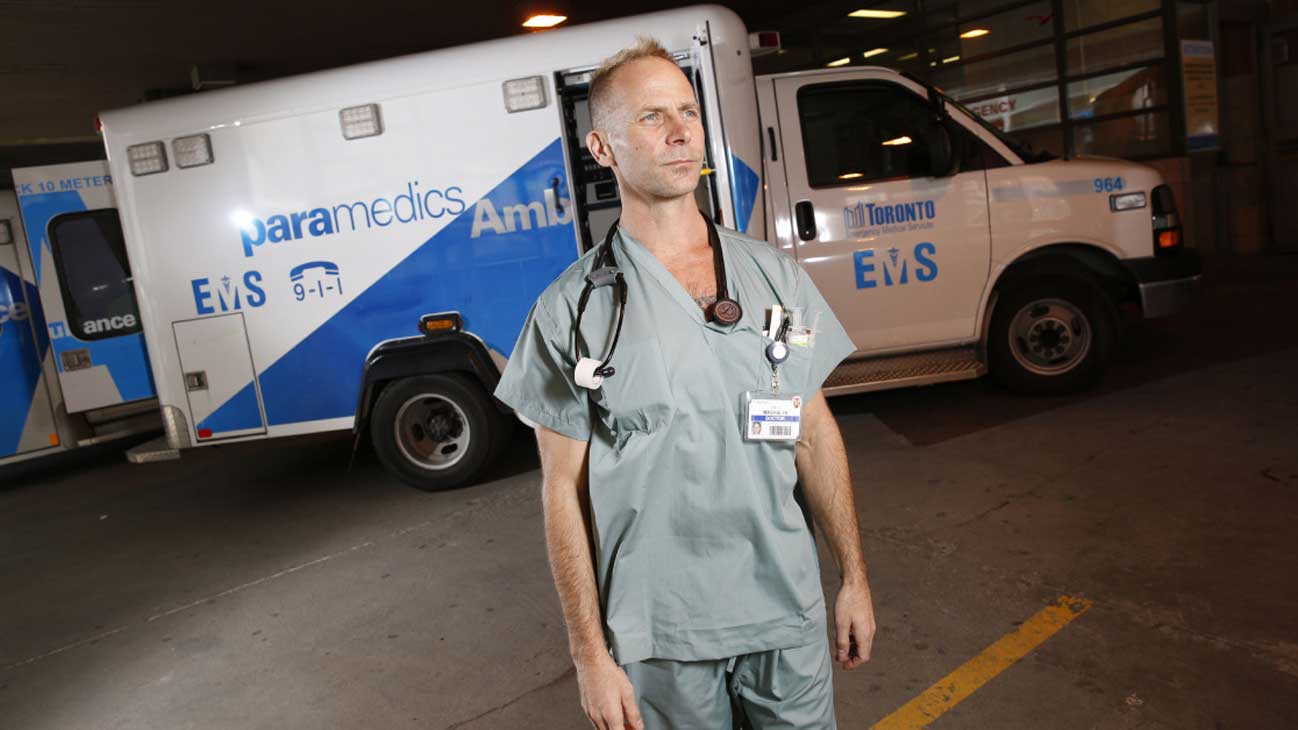Equipped only with his experience as an emergency physician in an urban hospital and a desire to understand the hardest parts of the world, James Maskalyk is the author of Six Months in Sudan, and his newest title, Life on the Ground Floor: Letters from the Edge of Emergency Medicine. Maskalyk speaks about his life-changing experiences on medicine’s front-lines, away and at home. His new book has just been reviewed by The Globe and Mail:
The problem with memoirs, especially when they are written by Western doctors heading off to Africa for work, is they can be self-indulgent and messianic in tone. Dr. James Maskalyk deftly avoids that trap in his highly acclaimed first book, Six Months in Sudan, an unvarnished look at a stint in a Médecins sans frontières (Doctors Without Borders) hospital in Abyei and a reflection on the necessity and limitations of humanitarian aid without the usual clichés.
He’s done so again in his new memoir, Life On The Ground Floor, in which Maskalyk turns his keen eye to emergency medicine.
Mercifully, Maskalyk – who practises, alternately, at St. Michael’s Hospital in Toronto and Black Lion Hospital in Addis Ababa – does not set this up as a black-and-white comparison; rather, he finds more similarities than differences in the patients and colleagues and as many strengths and weaknesses in the way care is delivered in these respective facilities and cultures.
In fact, the medicine delivered in a facility that is “two tin rooms and a back hall” and where money for payment “is pulled creased and tattered from some worried mother’s pocket” is often more thoughtful and appropriate than in a place “where you don’t see the dollars.”
That the distinction becomes blurred is not really surprising; after all, wherever you are in the world, the people who flock to emergency rooms tend to be desperate and, often, barely clinging to life, and the doctors (and nurses) who are drawn to this work are cut from the same cloth, thriving in a high-adrenaline environment.
Emergency medicine, Maskalyk writes, is all about “striving to give a stranger’s body another minute, another day, another year” and that quest is identical in a resource-poor setting in Ethiopia and a Canadian hospital that lacks for nothing.
Because minutes matter, ERs are always on the ground floor of hospitals – hence the book title. The subtitle, Letters from the Edge of Emergency Medicine, refers to the fact that the book has 26 chapters, one for every letter of the alphabet. A is for airway, B is for breathing, C is circulation (ABC being the age-old mnemonic used by health workers to remind them of the priorities in emergency care.)
ERs are also society’s great equalizer: Rich, poor, black, white, none of that matters; the sickest get care first and the others wait. “The ER has the best logic of any place I know. It’s why I work here. It’s something I believe in,” Maskalyk writes.
The idealism and passion are obvious.
But the strength of the book is that it captures the viscera, real and symbolic, of the ER – its sights, sounds, smells, pulse – without romanticizing the work.
“The turbulence of a disappearing airway is among the most dangerous sounds in the world,” Maskalyk writes. The tell-tale rasp one hears as a person is dying is described as the “sound of a world collapsing.”
These little gems are scattered throughout.
There are frustrations too. Emergency medicine is fast-moving, impersonal and ephemeral – “touching so many people but being touched by none of them.” There’s a lot of failure, a lot of self-doubt and a few regrets on every shift.
During a busy night in the ER, “I scratch down fifteen stories of people’s lives into a line or two of worries, circle the ones with outstanding business,” Maskalyk writes. At times, the images are seared into his mind, like the red painted toenails of the toddler he could not save.
ER doctors work hard and often live harder. The personal toll can be enormous. “It is easy to ignore your own worries when there is a never-ending list of worse ones placed in front of you,” he writes wistfully. “My relationship failed. Friends fell away. Beauty too. I felt fine.”
Fine physically, but not emotionally.
The most emotional parts of the book though do not take place in the emergency room. There is a third setting, a cabin in northern Alberta where Maskalyk takes refuge to reflect and write, and care for his elderly and fading grandfather, a proud man preparing to die.
You hesitate to even mention this element of the book because it feels like a spoiler, but it is these reflections that provide important context to what takes place in the emergency room, a reminder that what ultimately matters to patients, to people, is not the drugs, the surgery and all the other interventions, but the human contact and compassion.
Ultimately, that’s what the book is about – making connections, across continents, culture and social classes, and clinging to the joyful moments that can be found amid the horror.
“Medicine is life caring for itself,” Maskalyk writes. “To me, it’s the greatest story.”

